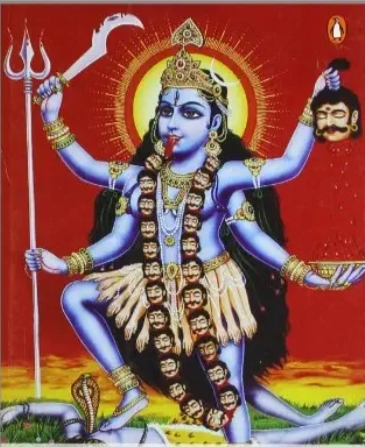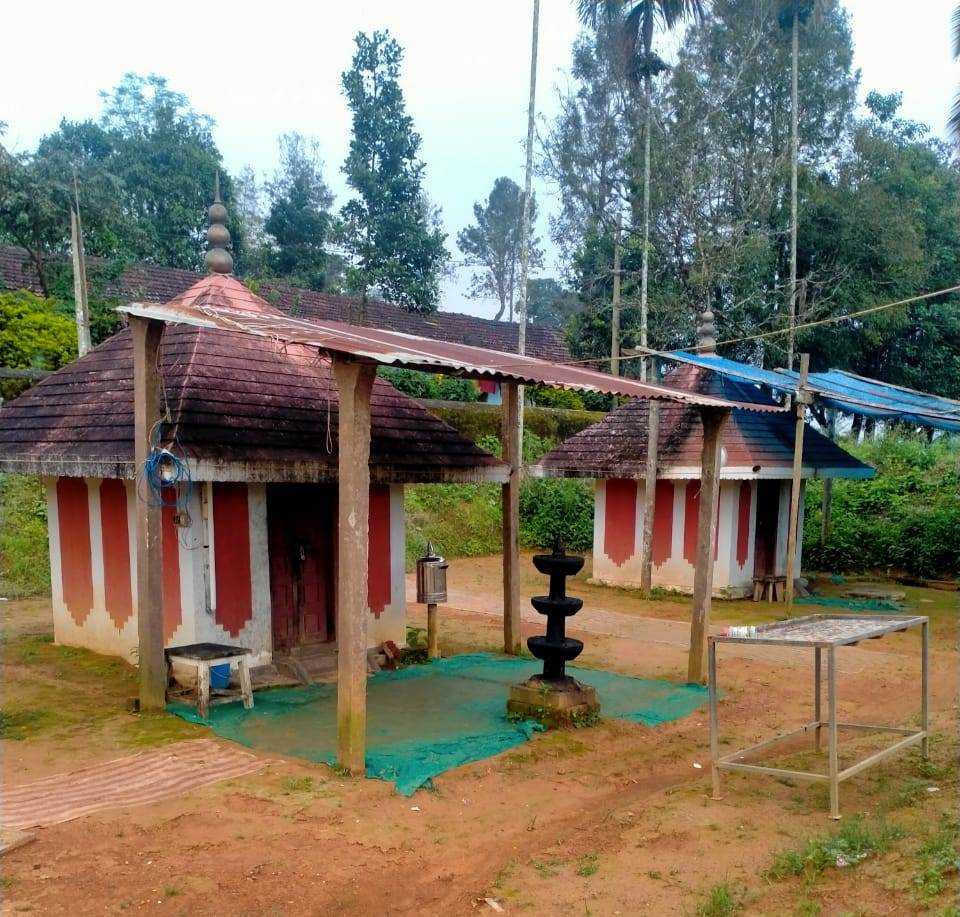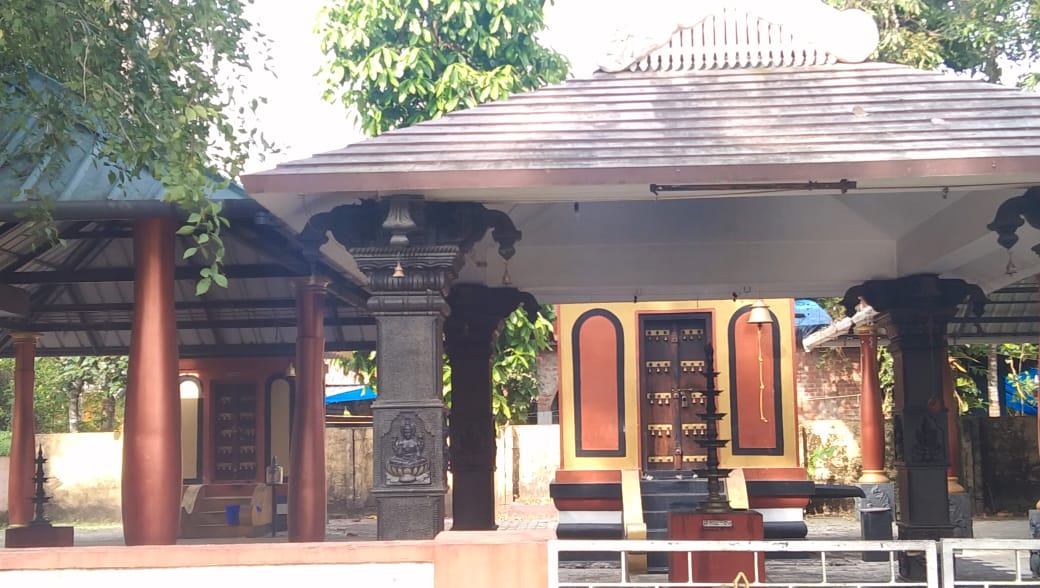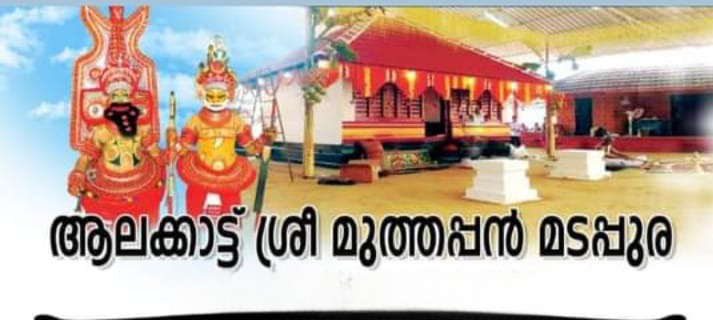Kanchipuram is the capital of temples in South India. The contributions of the ancient Pallava dynasty helped the place to become very famous. Between 600 -608 AD there was a great poet named Bhairavi, in the court of the Pallava King. More than a poet, he was a scholar, true devotee and a yogi. His relatives and followers were engaged in silk business in and near Kanchipuram. Special priests were appointed for guiding these people to spiritual prosperity. According to the historic records of ancient South India, the Shivates established 1008 Shiva temples. The Vaishnavates also built temples about the same number in Kanchipuram.
The Ekambaranatha temple of Lord Siva is the most important one in Kanchipuram. The famous Kanchi Kamakshi temple is situated very close to this temple. Sri Parvathi, the wife of Lord Siva, lost her beauty due to the curse of her husband Lord Siva. Later she was changed into her own image by the blessing of Lord Siva. After the incident Parvathi came to be known as Kamakshi. At present, we, the yogeeswara community worships Mother Goddess as Kariyamkulathamma. It is none other than Kanchi Kamakshi. The Peethas of four renowned Acharias in Tamil Nadu, can be seen in the temple of Kanchi Kamkshi.
There was a belief among the scholars that the temple of Kanchi Kamakshi which was earlier a Siva Parvathi temple and was turned into a Kanchi Kamakshi temple. The great saint, Sri Sankaracharya, defeated the Buddhists in a debate in 7th Century. As a result the ‘Kanchi Kamakodi Peetham’ was placed in the Kamakshi temple by him. According to historians, Shankarachariya used to meditate the Goddess Kamakshi. There are three deities of Lord Mahavishnu in the Kamakshi temple with three postures that are sitting, standing and lying. This point out that Kanchi Kamakshi is the incarnation of the combined divine power of Lord Siva and Vishnu.
In those days, Bhairavi’s relatives and followers used to travel to Thiruvananthapuram, the capital town of Travancore with the aim of business. Due to the lack of transportation , travelling was very difficult during this period. Duration of walking from Kanchipuram to Thiruvananthapuram was six months. So the merchant group of Kanchipuram was called ‘merchant of six months’.
Once a group of four merchants started journey to Thiruvananthapuram with bundle of woven silk cloth but they did not return with in the expected time. The wretched wives of the merchants approached their chief priest and described everything. He led them to the Kamakshi temple and prayed with much tear. These women, decided to travel to Thiruvananthapuram ,alone, in search of their men. When they started, the Goddess Kamakshi showered her mercy upon the women by accompanying them through out their journey. They reached safely, in Thiruvananthapuram, by the grace of their Goddess. On the way, they could visit the major temples, located at Thiruchanthur, Sucheedram, Nagarcoil and Mandakkadu. After taking rest, the journey was continued to Thiruvananthapuram. When they reached in Thiruvananthapuram, they heard a news that the merchants of Kanchipuram were dwelling in a place, Kariyamkulam, near Vattiyoorkavu. They moved again towards Nattarvila in Kariyamkulam by the end of their search. There they joined their men and lived together in Nattarvila.
The inhabitants of Nattrvila, were made preparations to conduct their traditional uthsav near by a Kavu. On the day of uthsav there was a revelation that the presence of Kanchi Kamakshi had reached from Kanchipuram, the same day the wives of the merchants reached here. So with out constructing a Devastanam (temple) and worshiping Kanchi Kamakshi, they need not please the ‘Devas’ in the Kavu.
Later on, the people who migrated from Kanchipuram became a respected group. The revelation and the virtues of the new comers made a change in the attitude of the locals and they began to co operate with them by all means. As a result a new temple for Kanchipuram Devi was built at Thittamangalam and started worshipping in the traditional way.
The newly constructed temple became very popular day by day and this caused envy among the local people towards the migrants. Their disturbance began to develop in many forms, intolerable to the migrants. So some were forced to move from Thittamangalam and get settled in the various areas of Nedumangadu Taluk.
In this context the devotees of Kanchi Kamakshi took a decision unanimously to change the place of the worship and deity of Kanchi Kamakshi to Kadukkamughal, the same place where the Kariyamkulam Sri Bhagavathi temple situates now. In fact the present Kariyamkulam Sri Bhagavathi temple is believed to be the old Thittamangalam temple. In the early days poojas and other rituals were done by the members called ‘Uranma’ which is continued in the same way, except that poojas are done by an appointed priest from the Brahmin community. It was according to the will of the Yogeeswara community and the members of Uranma.
06.00 AM Nada Thurappu ( Opening of Sreekovil)
07.00AM Usha Pooja
10.00 AM Ucha Pooja
10.30 AM Thiru Nada Adappu ( Closure of Sreekovil)
05.30 PM Nada Thurappu ( Opening of Sreekovil)
06.30 PM Deeparadhana
07.00 PM Atthazha Pooja
07.30 PM Thiru Nada Adappu ( Closure of Sreekovil)
Main Deity: Sree Bhadrakali with calm nature.
The temples of the Upa Devas inside the Nalambalam are: The temples of Lord Siva, Durga Devi and Ganapathi.The temples outside the Nalambalam are: The temples of Nagar, Bhairavan, Manthramoorthi, Lord Madan Thampuran, Paipan, Elenkom, Shastha and Brahmarekshess.
Pradakshina
One of the customary aspects of going to a temple is the practice of going around the deity or the sanctum sanctorum. This is called pradakshina. Typically, pradakshina is done after the completion of traditional worship and after paying homage to the deity. We cannot draw a circle without a center point. The Lord is the center, source and essence of our life. We acknowledge this by performing pradakshina.
Also, every point on the circumference of a circle is equidistant from the center. This means that wherever or whoever we may be, we are equally close to the Lord. His grace flows towards us without partiality. The pradakshina is done clockwise. Indeed, the word pradakshina means “moving rightward” in Sanskrit.
In order to do pradakshina in Kariyamkulam temple, one must start from the Devi temple (Main temple), then the temple of Lord Siva and do a pradakshina around the Devi temple. Then temples of Ganapathi and Durga. Next move outside the Nalambalam, to the temples of Nagar,the Bhairava,the Manthramoorthi, the Lord Madan thampuran, the Paipan, the Elenkom, the Sastha and the Brahmarakshess are to be covered. Before concluding, a pradakshina must be completed around the main temple.
The following are the main Utsav days of this temple.
Meenam Uthram Mahotsavam(7 Days)
Sivarathri Mahotsavam
Mandala Chirappu Mahotsavam
Makaravilakku Mahotsavam
Prathishta Varshikam
Navarathri Mahotsavam
The Aayillya Pooja of every month is a very special one to the devotees. There will be an unusual crowd on that day.
Every first of each Malayalam month, there will be Pongala in the temple. It is considered to be very sacred and blissful.
The day of Uthram is considered to be the most important day because it is the birthday (Pakka Nal) of the Devi
Thinkalazhcha Vrutham.
The first day of Chingham, the Malayalam month and Onam 1st to 7th.
Pournami Pooja.




No Events for next 2 days